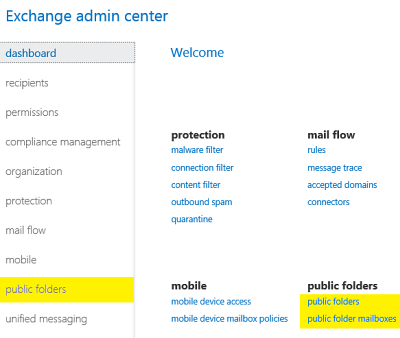

(replacing the server name with the name of your MRS Proxy Server) (replacing the domain \ user name with your own)

$Source_Credential = Get-Credential domain\exchangeadmin Now switch to Exchange Online PowerShell and do the following,

When prompted enter the login details for your Exchange Online admin account. \Sync-ModernMailPublicFolders.ps1 -Credential (Get-Credential) -CsvSummaryFile:sync_summary.csv It’s time to get the migration started! From your Local Exchange Server open Exchange Shell, change directory to C:\PFscripts and run the following command Get-PublicFolder -Recurse -ResultSize Unlimited | Where We need to rename any public folders whose name contains a backslash '\'.New-AcceptedDomain -Name PublicFolderDestination_MigrationPF -DomainName "" -DomainType InternalRelay Add your onmicrosoft domain to your local server.Only the following versions of Exchange server are supported by these scripts I would recommend that you save them all in a folder called C:\PFScripts to make following this article easier. Finish the Migration (Switchover to Exchange Online).Create public folder mailboxes and single public folder and assign the root permission of a mailbox.The migration process can be broken down into the following steps: MRS Proxy service running on one of your local Exchange Servers.Public Folder Mailbox size 50 GB have contain one or more folder have 50 GB.Local Exchange Permissions: User have Admin privilege.Exchange Online Permissions: Mailbox have root permission to access public folder.Exchange Version: Exchange 2013 all cumulative updates, Exchange 2016 all cumulative updates and Exchange 2019.Luckily, if you are migrating from Exchange 2013 or Exchange 2016 then Microsoft has made things a bit easier for you, this is still going to be a bit of a slog to complete, but much less so than migrating from legacy versions of Exchange.īefore we get onto the Migration we need to ensure that we hit the following migration prerequisites: We are looking forward to hearing from you.The process of migrating Public Folders is a complicated one unfortunately. Hold down “ctrl”>right click outlook> choose test-email auto-configuration>type email address and password>test please provide the test email autoconfiguration result under log tab via moreover, if they are not newly created, are these public folders in question created in exchange online or migrated from on-premises exchange server?ħ. could other users who are granted with the same permission see the public folder in the outlook client? if there are no other people, you can just perform a test like that and share with us the test result.Ħ. Wait a bit longer and check if there is any improvement then.ĥ. have you just created the public folder and granted yourself certain permissions? if yes, based on my test, the newly created public folder will not show up immediately after the creation. Use rich formatting and insert/edit media.Ĥ. please share with us a screenshot of the public folder permission list as follows for our further analysis. This article to view the public folders in the outlook client?ģ. if it refers to the outlook client, what’s the detailed version of your outlook client? with outlook 2013/2016 as an example, did you refer to for “outlook”, what did you refer to, the outlook client orĢ. Therefore, regarding your issue, i’d like to confirm the following information for further investigation:ġ. “ctrl” + 6 after the permission is properly set no matter whether they are mail-enabled or not. the public folders can be displayed in the outlook client by clicking According to my research and test, the answer is no.


 0 kommentar(er)
0 kommentar(er)
